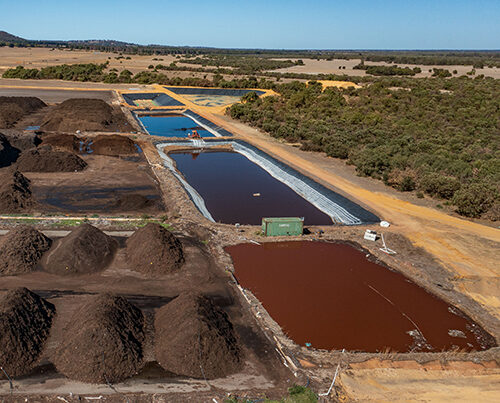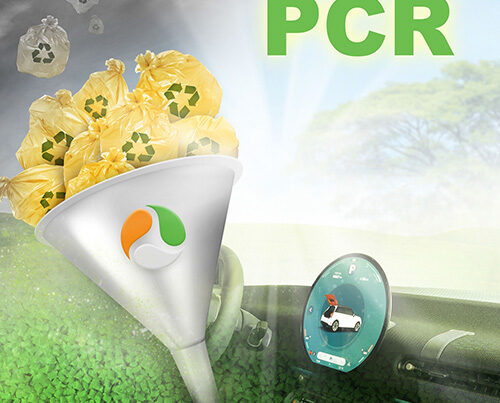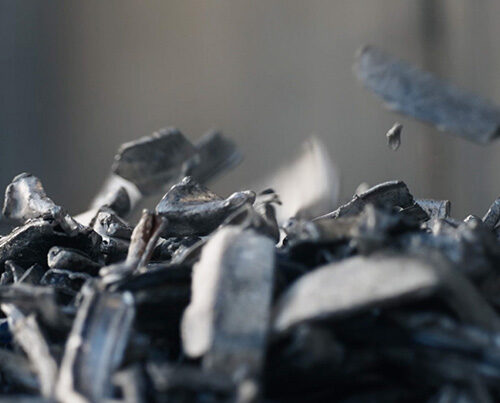Ambivalence towards composite materials
Lightweight construction processes that unite different kinds of technology are driving innovations in many sectors, in particular in the automobile industry. Composite materials make it possible for manufacturers to build high quality vehicle components, their greatest advantage being that they weigh so little. There is no arguing the fact that these materials have a positive impact as they reduce both fuel consumption and carbon emissions. So far, so good. We spoke to Dr Ansgar Fendel, managing director of REMONDIS Assets & Services, to find out to what extent these fibre composites and plastic-metal hybrids can be recycled once they reach the end of their useful lives.

Dr Ansgar Fendel, Managing Director of REMONDIS Assets & Services
Do you also think that lightweight construction processes are environmentally friendly technologies?
Dr Fendel: That’s an interesting question and there’s no one simple answer. The fact is that different makes and models of cars are sent to us for recycling – some much older than others. Each type of vehicle, however, has its own particular mixture of materials. The problem here is that the cars are not sorted by model before they are sent to us; they arrive at our plants all mixed together.
And it is a well-known fact that the better the materials are sorted, the better they can be recycled.
Dr Fendel: Absolutely and the same is true for industrial recycling. It is not economically practicable to recover the different materials from the scrap vehicles as the volumes of these materials vary so dramatically.
This problem will probably get worse as the amount of hybrid materials used in cars increases.
Dr Fendel: Exactly. Are you a parent? Then you must have observed the phenomenon that there is a natural tendency for everything to move towards disorder. Energy is needed, however, to create order again. And the same is true when it comes to recycling vehicles. Entropy is showing us where the natural limits to recycling are.
So, in reality, it’s not actually possible to get to the continuous fibres?
Dr Fendel: It’s possible to get to them but it’s not economically practicable to recycle them. Take a look at conventional recycling systems. You’re sent a large volume of materials which undergoes a number of stages to separate the different substances. The materials are cut up, separated from each other using magnets, sorted according to colour and so on. There are no continuous fibres left over at the end.
“These lightweight components are showing us exactly where our limitations are and we haven’t been able to find a good solution to this problem yet.”
Dr Ansgar Fendel, Managing Director of REMONDIS Assets & Services
So lightweight components are not ready for the circular economy then?
Dr Fendel: These lightweight components are showing us exactly where our limitations are and we haven’t been able to find a good solution to this problem yet. We know from Der Grüne Punkt, for example, that the different types of plastic can only be recycled if they have been sorted according to type beforehand and have a purity level of over 90%. The vehicles, however, not only contain plastics but also foam material, wood, pieces of metal and steel-aluminium compounds that are not so easy to separate from each other. In other words: realistically, composite materials can only be recycled if they are made of large parts that can be easily sorted. It would sound more than a little naive though to ask this of manufacturers.
That sounds as though we must give up, almost as if we must forget the whole idea of a circular economy.
Dr Fendel: No, not at all. We are currently working on some interesting processes that should help us to cope with the increasing heterogeneity of waste streams. One approach, for example, is to break materials down to their atoms so that they can be separated according to type and reused as raw materials. Or look at metals: we can already sort metals according to their particular alloy.
Progress may be being made with recycling metal alloys but there is still a problem with carbon fibre reinforced polymers or CFRPs. What’s the situation with fibreglass-reinforced plastics?
Dr Fendel: We need to be concerned about this material as well. Fibreglass-reinforced plastics have been around for a long while now and yet I’ve never heard of a process able to recycle GFRPs. It makes you wonder what will happen when the blades on all those wind turbines need replacing.
The EC Directive on end-of-life vehicles stipulates that 85% of a vehicle must be recycled or reused. Is it going to get more difficult to meet this high recycling rate?
Dr Fendel: Yes, it certainly is. We’re not going to be able to achieve this recycling rate in the long run. One of the problems, however, is in the wording of the directive. It says that information must be provided about the recyclability of a vehicle not whether it is actually possible to recycle it at the end.
It’ll probably get more and more difficult to separate different substances from each other. There is a clear trend towards reducing a number of different components into just one component, integrating functions so to speak.
Dr Fendel: No matter where you look, different functions are being integrated all the time. This leads to an even greater mixture of materials and to miniaturisation, i.e. very different substances in the smallest of spaces. In some cases, the components are so compact that it’s no longer possible to identify the different compounds. Fortunately, though, the automobile industry is taking this problem seriously. If everyone has the same goal then it should, in principle, make it easier to achieve.
Image credits: image 1: Adobe Stock: LaCozza












